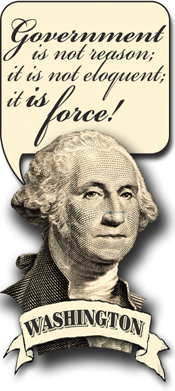Filed under: Capitalism, Democrat Corruption, Domestic Policy, Economy, Law, Politics, Regulation | Tags: 8 Years for Environmental Review, The Bayonne Bridge, The Port Authority of NY & NJ
President Obama has always had trouble with the jobs thing. According to his biography, he only worked for a year in the private sector, as a copywriter, and hated the job. He conceives of public sector jobs as “service” jobs, doing good things for humanity, and the private sector, the free market; capitalism as uniformly bad, greedy and self-interested. A viewpoint that makes it a little hard to deal with a major unemployment problem.
From the very first, Obama spoke of building infrastructure, repairing those ‘crumbling’ roads and bridges, and if you remember — he was surprised to find that there weren’t any “shovel-ready jobs.” He does not understand the process of building infrastructure, nor exactly what ‘infrastructure’ actually is. It was a brand new word in 1927, according to Merriam Webster Online.
in·fra·struc·ture: noun
1.the underlying foundation or basic framework (as of a system or organization
2.the permanent installations required for military purposes
3. the system of public works of a country, state, or region; also : the resources (as personnel, buildings, or equipment) required for an activity
For example, the Keystone XL pipeline is infrastructure.
In his newest book, The Rule of Nobody, Philip K. Howard uses the Bayonne Bridge as an example. It spans in a single graceful arch, the Kill Van Kull, a narrow channel that connects New York Harbor to the port of Newark, the largest port on the East Coast. The new generation of container ships, designed to pass through the newly widened Panama Canal require clearance of 215 feet. The Bayonne Bridge was 151 feet above the water. In 2008 the engineers turned in the solutions— a new bridge or a tunnel — to the Port Authority of NY & NJ. Each would cost more than $4 billion.
The project manager gulped and asked the engineers if the present bridge could not be retrofitted? The engineers came back in a few months and said yes, a new roadway could be constructed within the existing span, ½ at a time to keep the roads open, for a cost of $1 billion, a savings of $3 billion. That was 2009. By 2013 the Port still lacked approvals to start construction. Timing was important for the canal would reopen in 2015. No government official had the authority to appoint a lead agency.
A lead agency can issue a “finding of no significant impact” (FONSI) to deal with the environmental assessment. Letters went to a long list of possible “lead agencies,” but after another year, only the Coast Guard was left. Because of a federal regulation about a “navigable waterway,” there was a long list of approvals: an historic buildings survey, Native American tribes approval, The Eastern Environmental Law Center objected to possible second-level effects. More efficient ships might make the port more successful, quality of life, increased truck traffic. The EPA got involved. In 2012, president Obama declared the Bridge as one of seven essential port projects and committed to completing all permit decisions by April 2013. Who said that was final?
The average length of environmental review for highway projects is eight years. A project for a bridge one mile south has taken about 10 years. We desperately need a new electrical grid, but the government is incapable of making the decisions necessary to complete it. We are warned of the dangers of a potential EMP attack, and need to harden the grid, but there is no movement to do so.
Our federal government is always very busy creating new laws and regulations, but it is very bad at eliminating laws or regulations. They stay on the books and direct the work of millions of bureaucrats at millions of bureaucratic desks. Congress likes to make big general laws which they can brag about, but doesn’t like the nitty-gritty of ironing out all the fine points, legalities and consequences. They turn that over to the agencies, which is clearly not a satisfactory solution. See HHS, EPA, VA, IRS, NSA, TSA, and a few hundred other agencies.
Philip Howard explained: “The process is not aimed at trying to solve problems, but aimed at trying to find problems. You can’t get into trouble by saying no. With any large project something might go wrong. More studies are done.”
Help grow the herd! Share this post!
- Click to share on Twitter (Opens in new window)
- Click to share on Facebook (Opens in new window)
- Click to share on Tumblr (Opens in new window)
- Click to share on Pinterest (Opens in new window)
- Click to share on Reddit (Opens in new window)
- Click to share on Telegram (Opens in new window)
- Click to email a link to a friend (Opens in new window)
- Click to print (Opens in new window)
- More



























